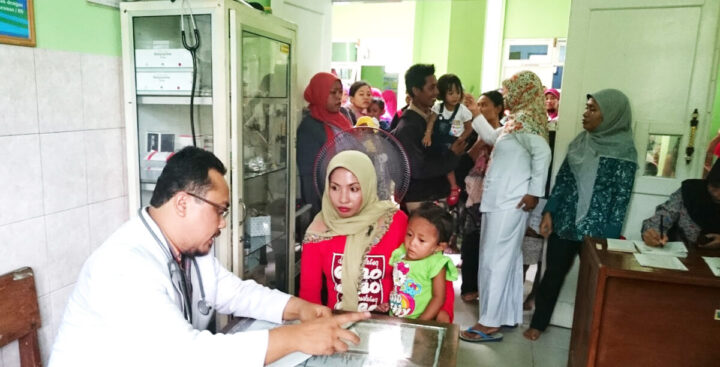Physicians working in primary health care settings, such as Puskesmas or klinik pratama, are known as primary healthcare doctors. By definition, a primary health care doctor can be a general practitioner, an internist, a pediatrician, or an obstetrics and gynecology doctor. But since there are limited number of specialists in Indonesia, most primary health care providers are general practitioners.
To work as a general practitioner, one has to complete four years of undergraduate education (sarjana kedokteran), continued with another 1,5-2 years to become a professional doctor plus one additional year for internship. Within that periode, there may also be a gap while waiting for placement Thus a total of 7-8 years is needed to be able to practice as a general practitioner.
This is quite a long period. If one studies economics, within the same period of time, one can already obtain a masters or even doctoral degree.
Becoming a general practitioner is so challenging, both from the training period and also in their daily working time. A primary healthcare doctor, and in this case a general practitioner, works in poor conditions. Their work load is heavy, having to handle 50-100 patients daily, and in such a limited working time, they are expected to be able to cover all patients within that period. As a consequence, doctors have no time to to give comprehensive treatment; they are only able to provide health care below regular standards.
Another challenge is the facilities. Proper medication cannot always be provided to patients due to the limited stock they have. Laboratory testing are also very limited in the facilities, especially those in remote areas. Without supporting examinations, diagnosis can only be done based on clinical suspiscion.
The gap between working period, number of patients, and facilities make primary healthcare doctors difficult to do optimal management on regularly-found illnesses such as hypertension and diabetes. In the end, the illnesses become uncntrolled and often times lead to fatal complications.
Apart from the heavy workload, primary health care doctors are also required to give health education to the community. It is impossible for doctors to be able to compromise time to provide adequate services to patients and the heavy responsibilty to provide health education for the communities. Primary health care services thus become far from excellent.
In addition to that, primary doctors also have to submit several monthly reports. Many doctors delegate this task to nurses and midwives in the puskesmas. This is also far below the standards, but nothing can be done because of the limitations and constraints they face in the health care settings.
In addition to their huge responsibilty and heavy work load, they are also underpaid. They receive a standard civil servant salary, while additional incentives are usually deducted by their superiors for reasons unknown and with no proper regulation existing on this matter. This shows how Indonesian primary health care providers have a heavy responsibilty and do not find this to be a promising career, particularly if they have a family to support.
With the new health insurance, or Jaminan Kesehatan Nasional (JKN) system, primary health care doctors are seen as gatekeepers. They need to be able to handle patients at the primary level before referring them to higher level services. But even the best gatekeeper will not be able to function well if they have to catch three or even five balls at once: treating patients, providing education, and writing reports at the same time.
When the JKN system became loaded with the high number of referrals and the increase of treatment costs at upper level health care settings, it is very easy for policy makers to blame primary health care doctors for the high number of referrals. It is much easier, and cheaper too, to find scapegoats then to make reforms for the entire national health system. But this is not the solution. To conclude that primary health care doctors are incompetent, and thus need additional training for two years, is not the solution for Indonesia. This is a waste of money.
Rather then spending money for redundant matters, it would be more useful to channel the funds for improving the health care system. Many things can be done: improving healthcare facility, adding human resources, improving diagnostic facilities, and providing adequate medication.
If policy makers think that Indonesian doctors are not well-equipped to work in primary health care settings, then it would be more useful to reform the curriculum. I think 7 years is enough to training a competent medical doctor in his or her field. But do not just talk about pretty things; students need to be exposed to reality and understand the limitations of healthcare facilities so in the end they will not be shocked. They could also perhaps prepare themselves to lower their own standards during their training period. They need to make big efforts to make many changes, including fighting corrupt superiors in their work place.
Dr. Erta Priadi Wirawijaya Sp.JP is a cardiologist and the Medical Services Director of Karisma Cimareme Hospital in Bandung
Article is generously translated by Danny Yatim from Angsamerah Associates.
